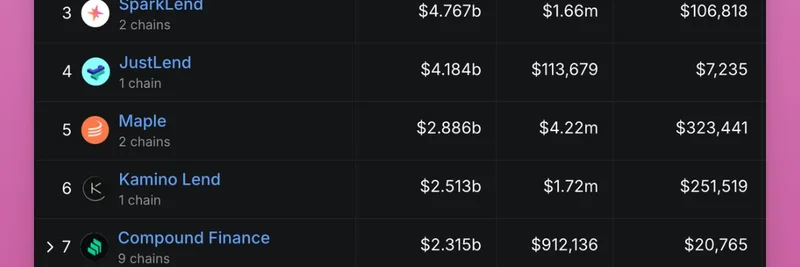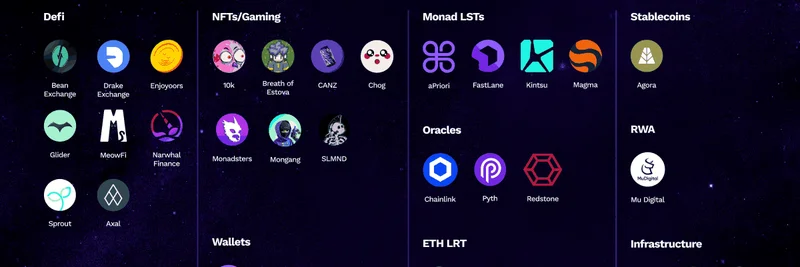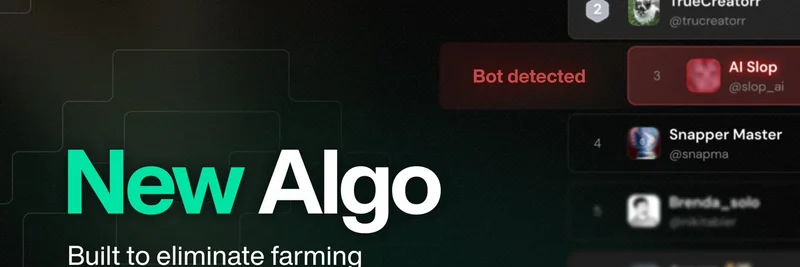DeFi has come a long way, and nothing shows its growth better than how lending protocols are handling their earnings. In a recent thread on X by Ignas from DeFi Ignas, he highlights that five out of the top ten lending protocols are now sharing revenue directly with their token holders. This move towards real yield—think buybacks and token burns—is a sign that these platforms are acting more like established businesses, rewarding their communities for sticking around.
For context, lending protocols in DeFi let users borrow and lend crypto assets, earning interest or fees in the process. Total Value Locked (TVL) measures how much crypto is deposited in these protocols, while fees and revenue show their profitability over the past week.
Here's a snapshot of the top players:
Aave leads the pack with a massive $32.238 billion in TVL across 19 chains, pulling in $24.56 million in weekly fees. But the real story is in the tokenomics—the economic models behind their native tokens.
Protocols Sharing the Wealth
Out of the top ten, five are putting revenue back into holders' pockets:
Aave: A snapshot vote has greenlit $50 million per year in buybacks. This means Aave will use part of its earnings to repurchase its tokens, potentially driving up the price by reducing supply.
Maple: They allocate 20-25% of revenue to buy back tokens and reward stSYRUP stakers. Staking here isn't just about security; it's a way to earn a slice of the protocol's success.
Fluid: Starting October 6, 2025, Fluid kicked off buybacks after hitting $10 million in annual revenue. They've already repurchased 0.36% of their token supply, showing quick action on promises.
Venus: 20% of revenue goes to buying back $XVS tokens, and on the BNB Chain, 25% of revenue is used to burn $BNB. This burn mechanism reduces the circulating supply, which can help with price stability and growth.
Interestingly, Venus's BNB burns are a nod to BNB holders who helped cover old bad debts from 2021 and 2022. A proposal details how 25% of BNB Chain revenues will fuel these burns until an equivalent amount is reached, creating a sustainable deflationary effect.
- JustLend: 30% of revenue funds quarterly burns of $JST tokens. In October 2025, they burned $17.7 million worth, equaling 5.66% of the supply. This massive burn comes from JustLend DAO's net revenue plus excess income from the USDD stablecoin, pushing towards a deflationary model.
The buyback program for JST is funded by JustLend DAO's net revenue and any USDD ecosystem revenue over $10 million, all executed transparently on-chain.
Points Programs and Governance-Only Models
Not all protocols are at the revenue-sharing stage yet. Spark and Kamino are running points programs, which often lead to airdrops—free token distributions to active users as a reward.
Meanwhile, Morpho, Compound, and Euler stick to governance-only tokens for now. Holders can vote on decisions, but there's no direct revenue flow back to them. As DeFi evolves, we might see these shift too, especially with competition heating up.
This trend towards revenue sharing mirrors traditional finance, where companies buy back shares or pay dividends. In DeFi, it's all on-chain and transparent, making it accessible to anyone with a wallet. If you're into meme tokens or broader blockchain plays, watching these lending giants can give clues on sustainable models that might influence smaller projects.
For the full thread and community reactions, check out the original post on X. DeFi's maturity could mean more stable opportunities ahead—stay tuned!




